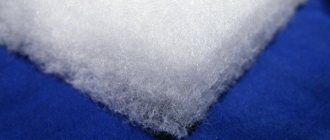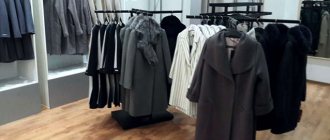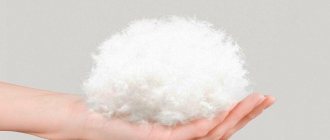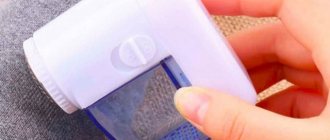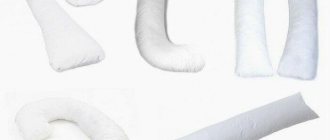Membrane operating principle
The membrane is a thin porous film of polyurethane, which is usually used to cover synthetic materials. It is based on microscopic pores that do not allow water to enter the clothing, but at the same time sweat freely passes through. This creates ideal conditions for creating a microclimate, thanks to which the membrane fabric is able to retain heat, “breathe”, and protect from low temperatures, water and wind.
Most often, the membrane is made of three layers, each of which performs a specific function:
- allows air to pass through
- ensures dryness and stable temperature,
- sweat evaporates
- resists wind and other influences.
Some membranes have an additional fleece layer, which increases their thermal insulation properties. Membrane jackets and sets can be worn both in spring and summer, and in the cold season.
The first models of clothing with multi-layer construction were used in the equipment of athletes. Nowadays, everyday things for children and adults are produced on its basis. Depending on the structure, the membrane is:
- 2-layer (2L), which is used when sewing jackets and overalls with insulation;
- 2.5-layer (2.5L), which has an additional layer of foam jersey;
- 3-layer (3L), from which equipment for working in extreme conditions is sewn.
Depending on the type of membrane, multilayer clothing can be pore (microporous hydrophobic and hydrophilic structure), non-pore (hydrophilic structure) and combined (bicomponent structure).
To improve the already impeccable properties, the membrane is coated with water-repellent solutions during production. To restore this coating, membrane jackets and suits must be periodically treated with special impregnations.
Membrane overalls - what is it?
Membrane overalls - what is it?
This thin and cold overalls at first glance on children 2-3 years old in frosty weather terrifies many mothers. We are used to seeing children in voluminous padding polyester or sheepskin clothes in winter. Therefore, membrane clothing causes confusion among many and a desire to quickly clothe the child. Is this necessary? And why more and more modern mothers prefer this material - more on that later. The principle of operation of a membrane
A membrane is a thin film with microscopic pores that is applied to a material (most often synthetic). The pores are designed in such a way as to prevent moisture from entering the clothing and, at the same time, allow sweat to escape freely. This creates an ideal microclimate inside the overalls: the material “breathes,” retains heat and protects from wind, water and cold. Initially, membrane technologies were used for sportswear. They are designed for a person who is on the move. Body activity produces heat, which is stored inside the jacket. The pores in the membrane quickly remove perspiration outside so that the wet body does not have time to freeze. And the lightness and compactness of the clothing ensures freedom of movement even in cold weather.
Such properties soon attracted children's clothing manufacturers. And this is not surprising. After all, now you don’t have to worry that a sweaty child after a stuffy subway will catch a cold in the cold wind.
How to wear it correctly?
An important point when using membrane overalls is the “underdress”: • The key principle is multi-layering: the colder it is, the more layers of clothing, and vice versa.
The presence of synthetics is no less important; it does not absorb moisture, but conducts it into the upper layers of clothing. • The best option for the bottom layer of clothing is thermal underwear. It quickly wicks moisture away from the body, keeping you dry and comfortable even during physical activity.
• It is contraindicated to wear cotton underwear; it absorbs sweat without draining it out, and thereby causes hypothermia.
• At above-zero air temperatures (up to 0 degrees), one good layer of thermal underwear is enough to avoid freezing in a membrane overall.
• In cold temperatures, add a layer of fleece or wool sweater.
Proper use of the membrane overalls provides the child with comfort at temperatures from above zero to -10 and below. It only touches the membrane when the baby is moving
. Therefore, it is recommended to buy such overalls for children starting from 2 years of age. Then the child is already actively moving and does not spend the entire walk motionless in the stroller.
How to wash?
- As a rule, membrane jackets and overalls are easy to wash with a damp cloth or sponge and dry quickly. To remove more serious contaminants when washing, it is necessary to choose gel powders that do not contain chlorine components, bleaches, preferably with the indication “For membrane clothing.”
Forget about bulky jackets that turn your child into an inactive “snowdrift”, give your children a comfortable and warm winter! Membrane boots:
| Read also: | Choosing entertainment for winter |
- Publication date: 11/01/2019
- To help mom
Advantages of membrane clothing
Membrane fabric has high potential, thanks to which it is able to displace conventional clothing and footwear from the market. Buyers value the membrane for its special advantages, which allow it to remain active in any weather. These include:
- high levels of water resistance;
- ensuring ease and freedom of movement;
- the ability to allow air to pass through and maintain optimal thermoregulation;
- absence of a “greenhouse” effect due to the use of a rubberized waterproof layer;
- versatility, which can be adjusted through the use of different intermediate layers;
- stylish and fashionable design;
- thoughtful equipment, including comfortable hoods, high collars, and fasteners that regulate the size of the product.
Membrane items are the best option for children who, even in dry weather, will definitely come across dirt or a puddle. Thanks to the dirt- and water-repellent impregnation in a membrane jacket or overalls, a child can freely walk in the park, run through the forest or jump in puddles.
What is membrane clothing for children
Membrane clothing for children - freedom for children in any weather
The development of technology has made our life more comfortable and easier. Adults cannot imagine their normal day without electricity, a car, or household appliances, but at the same time they can still choose ordinary clothes for their children, not trusting modern materials. But in vain!
Membrane clothing for children Hippychick (Hippichik) is a modern solution for fidgets. Let's figure out how it differs from ordinary waterproof clothing, usually rubberized or impregnated with a water-repellent composition.
From what, from what, from what?
As a rule, membrane clothing consists of 3 layers. The top layer protects from wind, moisture and dirt. Thin polyurethane membrane allows air to pass through and sweat to evaporate, keeping you cool and dry
.
In models with lining, a layer of fleece insulates and creates additional comfort, allowing you to wear waterproof overalls not only in spring, summer and autumn, but also in slushy winters. This multi-layer technology was originally used to produce sportswear that required special comfort and convenience. To the delight of children and parents, the same technology is now being used to produce comfortable demi-season waterproof overalls and raincoats
for children. Waterproof, lightweight, and comfortable for children in any weather.
Why are children's membrane clothes better?
- Light and free.
Thanks to the thinness and lightness of the material, children do not feel constrained. Unlike rubberized “waterproofs”, the membrane film does not add excessive thickness to the material, maintaining the natural plasticity of the fabric.
- Waterproof.
Hippychick membrane clothing for children, with a degree of moisture protection of 3000-5000, remains dry in rain and light snow. The additional dirt- and water-repellent Teflon coating of waterproof children's overalls greatly facilitates the care of children's clothing.
- "Breathable"
.
The membrane removes moisture and sweat from the inside and lets air in from the outside, providing thermoregulation. It is this property of membrane clothing that makes it so convenient and comfortable. Rubberized “waterproofs”
are completely water- and vapor-proof and are often cheaper than membrane clothing.
But, while providing good protection from external moisture, the rubber waterproof layer has the property of accumulating “condensation”
of body evaporation inside the clothing, providing quite noticeable humidity under the clothing, often comparable to the external one.
But a properly dressed child in membrane clothing will never have a “wet back
,” no matter how intensely he moves!
- Universal
. By adding different layers of clothing to your kit, you can adjust the required degree of insulation depending on the weather. The ideal pair for membrane clothing is thermal underwear, wool, fleece and other synthetic fabrics that do not absorb moisture.
- Suitable for active children
who will definitely find a puddle or mud after the rain. In clothes made of membrane fabric with a water- and dirt-repellent coating, a child can safely jump through puddles, walk through the forest or park, and parents no longer have to tell the baby “don’t climb, it’s wet/dirt.”
- Beautiful and fashionable
. A stylish and active toddler in a bright, waterproof children's overalls invariably evokes smiles and compliments from passers-by, even if he is up to his eyeballs in impassable mud.
- Thought out to the smallest detail
. Waterproof raincoats and demi-season overalls for children made of membrane fabric are distinguished by a thoughtful design: high collars, comfortable hoods, elastic bands and additional fasteners for size adjustment. The compact version of the raincoat from Hippichik is packed in a convenient small bag that you can always take with you.
How to wear?
Membrane clothing for children is an excellent choice for rainy weather. In warm weather (above 15 degrees), to protect from wind and moisture, you can wear a raincoat or unlined overalls over your regular clothes, and models with a fleece lining are also suitable for cool autumn or warm slushy winter (from plus 10 to minus 5 degrees in combination with thermal underwear).
It is important to choose the right clothes
for the membrane.
Cotton should be avoided as it absorbs sweat strongly, interfering with the membrane's functioning. In cold weather in summer and spring, it is better to wear T-shirts or blouses made of high-quality synthetic materials that wick away moisture, or thermal underwear. For additional insulation, wear fleece or woolen clothing as a second layer.
It is worth considering that thermoregulation occurs during movement.
.
Heat retention and moisture evaporation occurs due to the difference in pressure under the membrane and outside. To maintain heat, it is necessary to remove moisture from the body, this happens precisely when moving. That is why waterproof membrane clothing is ideal for active children
who do not want to sit still for a minute. If a walk involves sitting motionless in a stroller for a long time, it is worth additionally insulating the child.
Washing membrane clothes
Many mothers are interested in how to wash membrane clothes
. It usually does not require frequent washing, since external dirt can be easily removed with a damp piece of cloth or a sponge with soap. Therefore, most often, waterproof overalls are washed entirely only when the lining gets dirty.
Before washing, you need to fasten the zippers and Velcro. It is better not to use regular powders, as they can clog or damage the membrane cells and impair breathability. If you use detergents containing chlorine for washing, the membrane will begin to get wet. The best option is a special detergent for washing clothes made of membrane fabric.
or liquid soap without chlorine. You can simply wash children's overalls by hand at a temperature of 30-40 degrees.
It is recommended to dry clothes made of membrane fabric flattened, with the lining turned outward.
. You can place your clothes on a cotton cloth that absorbs water.
Not recommended!
What NOT to do
to do with membrane clothing:
- use detergents with chlorine
- use bleaches and conditioners that clog the pores in the membrane
- soak
- wash at high temperature in a washing machine
- twist when squeezing
- dry on radiators and other heating devices
- iron
Membrane clothing for children does not require special care; if handled carefully, it will serve you for many years, providing peace of mind to parents and comfort to children. Watch a funny short video about Hippichik waterproof membrane overalls and raincoats.
Disadvantages of membrane clothing
Membrane fabric items are designed for outdoor activities. The membrane is popular among adults because it is ideal for mountaineering, hiking, hiking and other sports that require high physical activity. Accordingly, if the child is still small, if he spends more time in a stroller and moves little during walks, there is no point in dressing him in membrane clothes.
Other disadvantages of membrane products include:
- the need for delicate care using special products and impregnations;
- relatively short service life, only a few years;
- the need for careful selection of the intermediate layer of clothing;
- synthetic origin of the material.
Another significant drawback of membrane products is their high cost, which distinguishes them from things made from simple materials. The price is determined by the characteristics of the membrane itself and the high costs that accompany its production.
How to choose the right membrane clothing for your child
Currently, membrane technology is successfully used by manufacturers of the best outerwear for children and adults. However, it is not enough to know about the advantages of things made of membrane; you also need to understand how to choose it correctly. To do this, during purchase you should:
1. Check the seams for strength and neatness. 2. Make sure that the clear and rich colors will not leave traces of paint. To do this, just run a damp cloth over the surface of the membrane. 3. Check whether the size of the membrane product matches the child’s parameters. How correctly it will fit your figure depends on this. 4. Study the waterproofness of the membrane. This parameter indicates how much moisture the membrane fabric can withstand without getting wet. For different manufacturers, it ranges from 1000 to 20,000. Accordingly, products with a coefficient of 1000 are best worn in dry weather, and products with a coefficient of 20,000 can withstand even a strong storm. 5. Study the vapor permeability of the membrane. This parameter characterizes the level of activity at which moisture will be removed from the body. It can be from 3000 to 15000. Jackets and suits with a coefficient of 3000 are suitable for children with low physical activity, and with a coefficient of 15000 - for children who play sports and spend time actively. 6. Check the presence of insulation. If a mother buys a membrane jacket or trousers for the winter, she needs to pay attention to the quality of the insulation. This determines how comfortably the child will endure the cold during winter walks.
Tips for caring for membrane clothing
Clothing made from membrane materials requires careful handling and delicate care. It can last quite a long time if you care for it properly. We will talk in more detail below about the features of washing membrane clothes. As for storage rules, membrane jackets and other items should be stored away from direct sunlight. To do this, use special covers and hangers. By following these principles, you can preserve the appearance of the product and increase its service life.
How to wear membrane clothing
Outerwear made of membrane materials is an excellent option for rainy weather. The intermediate layer may change depending on the air temperature. At temperatures above +15 degrees, you can use a jacket without lining or even a raincoat. At temperatures below +15 degrees, it is better to wear a membrane model with a fleece lining. It can be worn both in cool autumn and warm rainy winter.
In the case of membrane jackets and sets, moisture evaporates, and heat is retained due to the difference in osmosis under the membrane fabric and outside. Accordingly, in order to maintain heat, you need to remove moisture. This can only be achieved through active pastime. That is why such clothes are an ideal choice for active and active children. If the child will sit in the stroller most of the time, it is better to additionally put on a warm jacket.
It is better not to use things made of cotton fabric as an intermediate layer. It is characterized by increased hygroscopicity, which worsens the properties of the membrane. In cool summer or spring, it is better to limit yourself to thermal underwear, sweaters and T-shirts made of high-quality synthetic fabric that wicks away moisture well. For more warmth, you can wear a jacket made of wool or fleece under the membrane.
What to wear under clothes made of membrane fabric
The basic rule: follow the principle of layers. There are statements in the forums: “we wore whatever we could, the child didn’t sweat or get cold!” If you can do this, great. But the membrane didn't work exactly in this case, you were just lucky. Many are frightened by the need for special underwear, and the unpleasant prospect of buying expensive thermal underwear is imagined.
– If opportunities, funds and time allow, buy thermal underwear and underwear. If you bought super-thermal underwear and the best underwear from a Mexican jerboa and are wondering how it could be otherwise, read the forums of professionals (hikers, athletes) and get down to earth. Everything is wrong with you, and you have chosen the wrong companies... Hence the moral: rely on your intuition and look at the child. For his personal comfort.
– A mixed T-shirt and tights from the Noskoff factory (composition: 70% cotton 28% polyamide 2% elastane) would be ostracized by professionals, but for some reason they save the average child in membrane clothing on an active walk under hurricanes, avalanches and heavy snow on Sovetskaya street in the city of N-ska.
To best retain heat and ensure proper operation of the membrane, use three layers of clothing.
* First bottom layer: underwear. It retains heat and removes excess moisture. They often ask if it is possible to leave cotton shorts and a T-shirt, the answer is: yes. But instead of a T-shirt, it is still advisable to put on a long-sleeve mixed T-shirt (turtleneck) on the child. And don't be afraid of synthetics. So that underwear (footwear + tights) covers the body as much as possible. Now on sale there are options that are pleasant to the body, do not irritate the skin and contain a small percentage of synthetics. Desired percentage: at least 10%. If you wear 100% cotton, it will simply absorb moisture without wicking it away. Or buy thermal underwear that is worn directly on your naked body. There is even one with merino wool - it is soft and suitable for the baby’s skin (a terrible image of a prickly robe flashes through the mother’s mind).
* The second layer is worn at temperatures from -10, depending on the insulation in the clothing. If the product contains at least 200 g of insulation, it is possible that a second layer will be required only at temperatures from -15. In most cases (if the clothes are of high quality), up to this temperature nothing cooler than a long sleeve T-shirt is needed. You have dressed the child correctly, the principle has been followed - he does not freeze. So, it’s getting colder - we put on the second layer, this is an underwear made of fleece or wool. It also retains heat and removes moisture further. Either you buy a branded underwear, they, by the way, are very comfortable and durable (they stretch well, last for two years), or you order a fleece suit from a regular store-bought fleece from your nearest seamstress. High-quality fleece can be purchased at warehouse stores that sell camping equipment. (An article about subdivisions will definitely follow in a couple of weeks.)
Is it possible to use an ordinary “grandmother’s” self-knitted suit under the membrane? After all, branded underwear is also made of wool...
The fact is that branded merino contains synthetics. Pure wool is hygroscopic and gets wet. Order or buy a ready-made knitted suit with the addition of synthetics - wool pan, wool acrylic, acrylic, and the problem will be solved.
* The third layer is the overalls or set itself. All! Do not need anything else.
